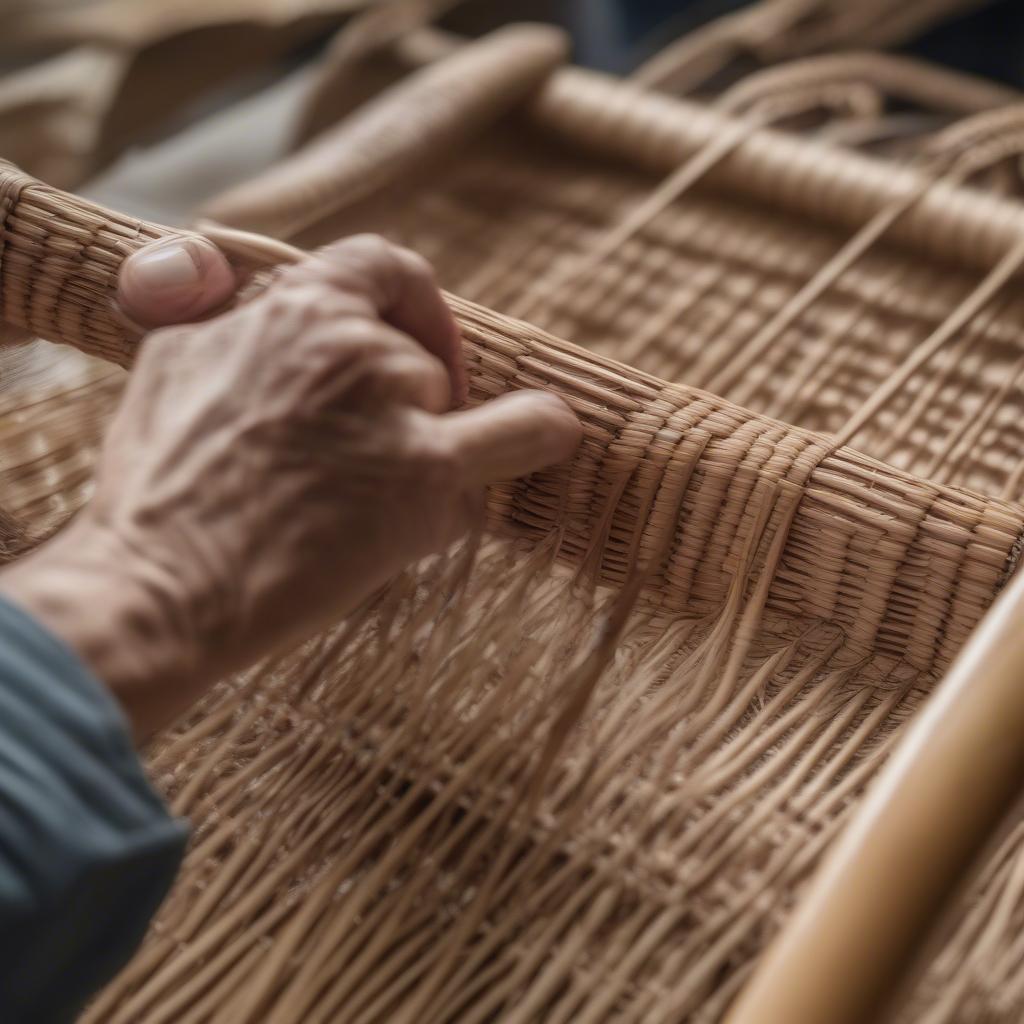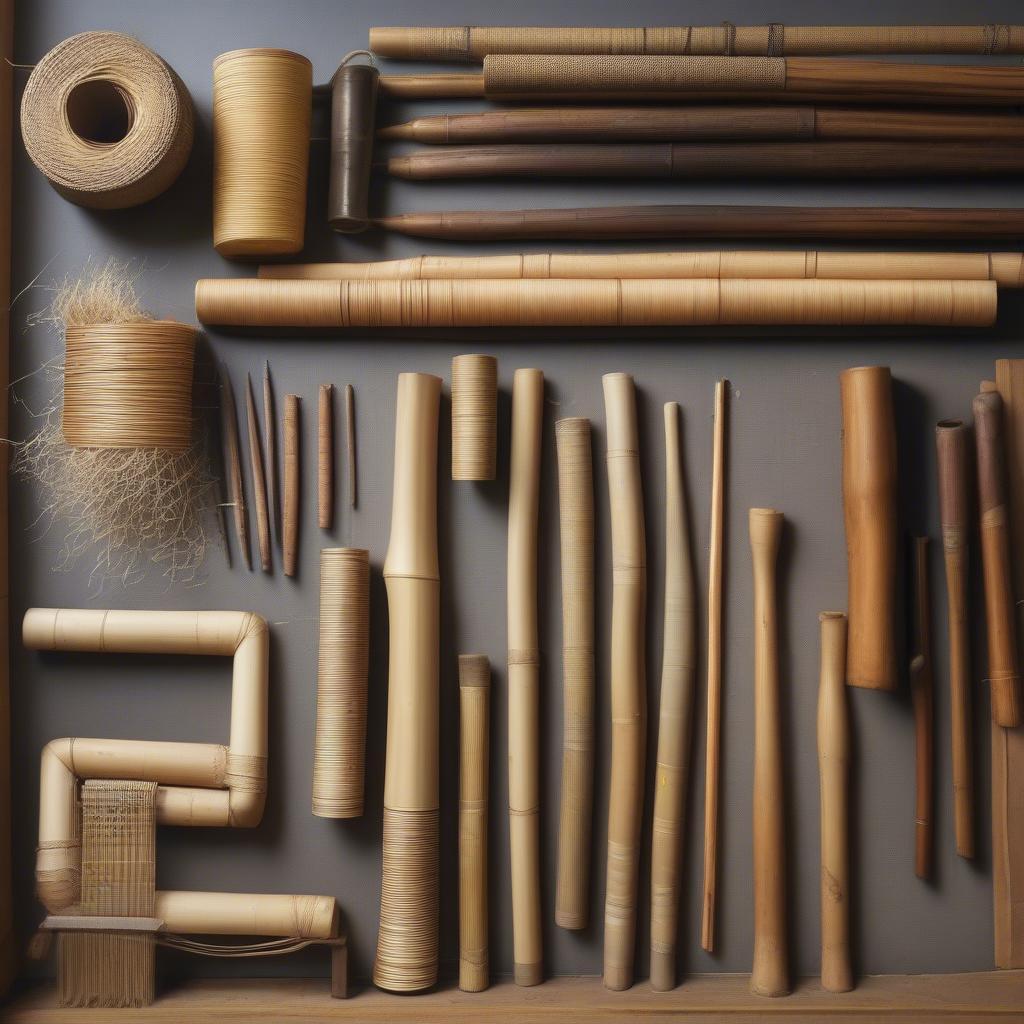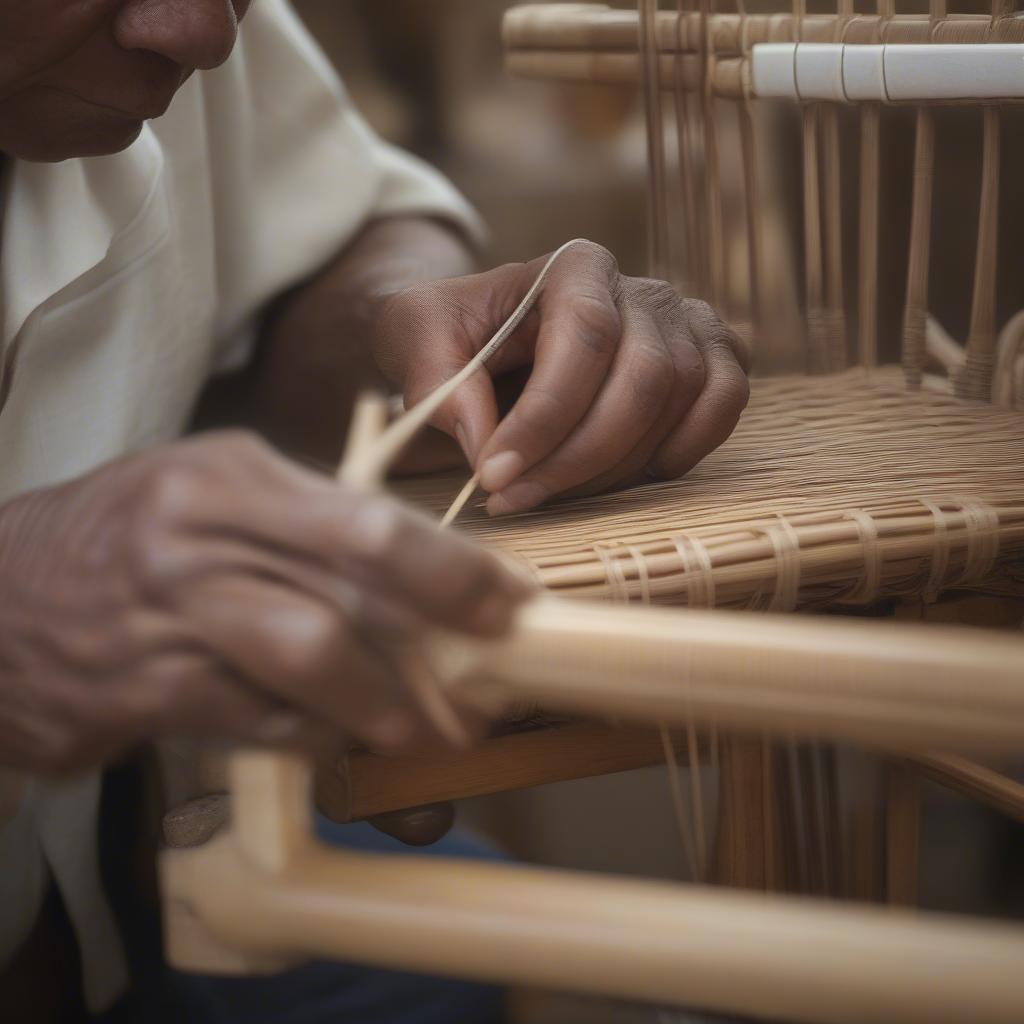Weave Chair
Chair Cane Weaving Prices: A Comprehensive Guide
Understanding Chair Cane Weaving Prices can be tricky. From the type of cane used to the complexity of the weave, several factors influence the final cost. This guide will delve into those factors, helping you budget effectively for your next cane weaving project or purchase.  Close up of hands expertly weaving chair cane
Close up of hands expertly weaving chair cane
Decoding Chair Cane Weaving Costs
Several key elements contribute to the overall price of chair cane weaving. Let’s break them down:
-
Type of Cane: Different types of cane vary in price. For example, binder cane, commonly used for structural support, is generally less expensive than finer, more delicate peel cane used for the weaving itself. Knowing the type of cane needed for your project is crucial for accurate budgeting.
-
Complexity of the Weave: Intricate patterns like the French cane weave or the more complex Star of David weave require more time and skill, hence a higher price tag. Simpler weaves, such as the common open weave, are typically more affordable.
-
Size and Shape of the Piece: A small footstool will naturally cost less to cane than a large armchair. The shape also plays a role. Curved or irregular shapes require more intricate weaving and therefore increase the cost.
-
Condition of the Existing Frame: If you’re restoring a chair, the frame’s condition impacts the price. A frame needing significant repairs before weaving can begin will add to the overall expense.
-
Location and Weaver Experience: Prices can vary based on geographic location and the weaver’s experience. Highly skilled artisans with years of experience often command higher prices.
Factors Affecting Chair Cane Material Costs
Beyond the labor costs, the price of the cane material itself is influenced by several factors:
-
Source and Quality: High-quality cane sourced from sustainable farms often comes at a premium compared to mass-produced cane of lesser quality.
-
Processing and Treatment: The process of preparing the cane for weaving, including stripping, sizing, and sometimes pre-soaking, can influence the final cost.
 Various types of cane used in chair weaving displayed on a workbench
Various types of cane used in chair weaving displayed on a workbench
How to Get Accurate Chair Cane Weaving Prices
Getting an accurate price requires contacting a professional chair cane weaver. Be prepared to provide details about your project, including:
-
Photos of the piece: Clear photos of the chair or item needing caning will help the weaver assess the project accurately.
-
Dimensions: Providing measurements will give the weaver a clearer understanding of the scale of the work.
-
Desired weave pattern: If you have a specific weave pattern in mind, sharing this information upfront is essential.
-
Condition of the frame: Be honest about any damage or repairs needed to the frame.
Is DIY Cane Weaving a Cost-Effective Option?
While DIY can be tempting, cane weaving requires specialized skills and tools. appleton weave dining chair For complex projects or valuable antique furniture, hiring a professional is recommended.
Finding a Reputable Chair Cane Weaver
Look for weavers with experience, positive reviews, and a portfolio showcasing their work. Don’t hesitate to ask questions about their process and pricing structure.
 A skilled artisan meticulously weaving the seat of a chair.
A skilled artisan meticulously weaving the seat of a chair.
Conclusion
Understanding chair cane weaving prices involves considering several factors, from material costs to the weaver’s expertise. By carefully researching and communicating your needs, you can secure a fair price and enjoy the beauty and durability of a well-crafted cane piece. Invest wisely in quality materials and craftsmanship to ensure a lasting investment for your furniture.
FAQ
-
How long does chair cane weaving typically take? The timeframe depends on the project’s complexity and the weaver’s schedule.
-
What is the average lifespan of a cane seat? With proper care, a cane seat can last for decades.
-
Can I paint or stain cane? Yes, cane can be painted or stained to match your decor.
-
How do I clean a cane seat? Regular dusting and occasional wiping with a damp cloth is recommended.
-
What are the most common types of cane weaving patterns? Common patterns include open weave, French cane weave, and the Star of David.
-
What is the difference between wicker and rattan? While both are natural materials, rattan refers to the plant itself, while wicker is a weaving technique.
-
Where can I find chair cane weaving supplies? Cane weaving supplies can be found online, at craft stores, or from specialized suppliers.
Expert Insight:
John Carter, Master Cane Weaver: “Investing in high-quality cane is crucial. It’s more durable and will hold its shape better over time.”
Sarah Miller, Furniture Restoration Specialist: “Don’t underestimate the value of a skilled cane weaver. Their expertise ensures a professional and long-lasting repair.”
David Lee, Antique Furniture Appraiser: “A well-executed cane weave can significantly enhance the value of an antique chair.”
Need help with your cane weaving project? Contact our Hotline: +84 388 951 999, Hanoi, Vietnam or Tech Avenue, Suite 12, San Francisco, CA 94105, USA. We have a 24/7 customer service team. You might also want to explore our other helpful resources on our website such as appleton weave dining chair.
